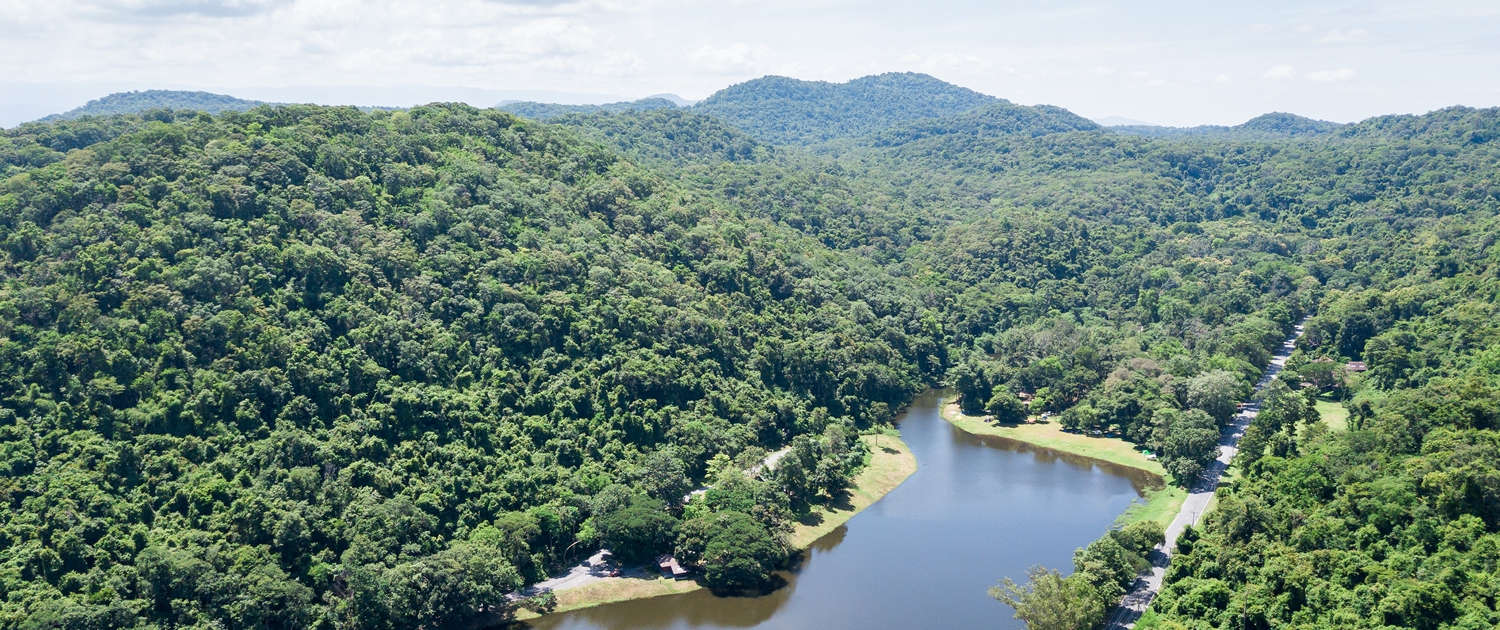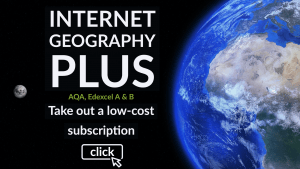Home > Geotopics > The Living World > Interdependence in the Tropical Rainforest
Interdependence in the Tropical Rainforest
Tropical rainforests are some of the most diverse and complex ecosystems on Earth. One of the key reasons for this is interdependence – the way all parts of the ecosystem rely on each other to survive.
What is Interdependence?
In the context of ecosystems, interdependence refers to the fact that all living (biotic) and non-living (abiotic) components of an ecosystem are interconnected. A change in one part – like a drop in rainfall or the loss of a species can affect everything else. In a tropical rainforest, climate, water, soils, plants, animals, and people are all connected in a web of relationships. Let’s explore how.
Climate and Decomposition
The hot, wet climate of the rainforest creates perfect conditions for plants to grow. But it also causes dead leaves and animals to decompose quickly. This rapid breakdown releases nutrients into the soil, creating a thin yet rich layer known as humus. Without the climate’s constant heat and moisture, the nutrient cycle would slow down, affecting all other aspects of the ecosystem.
Soil and Nutrient Cycling
Tropical rainforest soils are actually relatively poor in nutrients. Most nutrients are found in the plants, not deep underground. That’s because of a rapid and efficient nutrient cycle:
- Plants take up nutrients quickly through their shallow roots.
- When leaves fall or plants die, decomposers like fungi and bacteria break them down.
- Nutrients are returned to the surface soil and taken up by plants again.
- This cycle is crucial for supporting the dense vegetation of the rainforest. If something breaks the cycle, like deforestation, the soil loses its nutrients and becomes infertile.
The Role of Decomposers
Decomposers are the rainforest’s recyclers. They break down dead plants and animals, returning vital nutrients to the soil. This supports plant growth, which in turn supports animals and humans. Without decomposers, the whole ecosystem would grind to a halt.
Animals and the Ecosystem
Animals also play an important role:
- Monkeys help disperse seeds when they eat fruit and move through the canopy.
- Eagles hunt prey like monkeys, helping control populations.
- Poison dart frogs act as predators and prey, part of many food chains.
- All animals help cycle nutrients back into the soil through their waste.
- Animals depend on plants for food and shelter, and in turn help plants reproduce and survive. This is another layer of interdependence.
People and the Rainforest
Many indigenous people rely on the rainforest for:
- Food (like fruits and nuts)
- Fuel (wood)
- Medicine (plants with healing properties)
- Materials (for building homes or tools)
These communities often live in harmony with the rainforest, understanding its delicate balance. However, activities like logging, farming or mining can break that balance and harm the whole ecosystem.
The Nutrient Cycle
The tropical rainforest is powered by an incredible nutrient cycle:
- Plants absorb nutrients from the soil.
- Animals eat plants and return nutrients to the soil through waste.
- Decomposers break down organic matter.
- Nutrients return to the soil and the cycle continues.
This system relies on constant heat, moisture, and biodiversity. One break in the cycle, like cutting down trees, can have significant consequences.
Why Interdependence Matters
Without interdependence, the rainforest wouldn’t function. Every living thing, from fungi to frogs to people, depends on something else. If trees are removed, animals lose shelter. If decomposers die off, plants can’t get nutrients. If the climate changes, everything is affected.
Interdependence maintains the ecosystem’s balance and resilience. Understanding these links helps us protect rainforests and the planet.
Related Topics
Use the images below to explore related GeoTopics.



